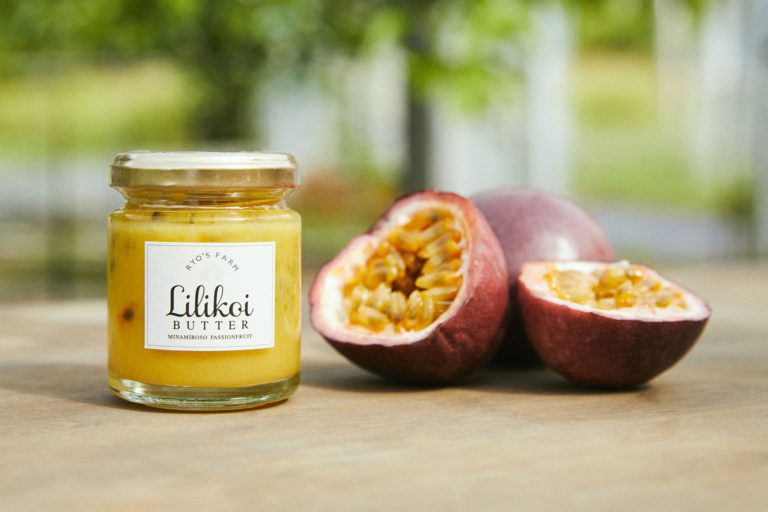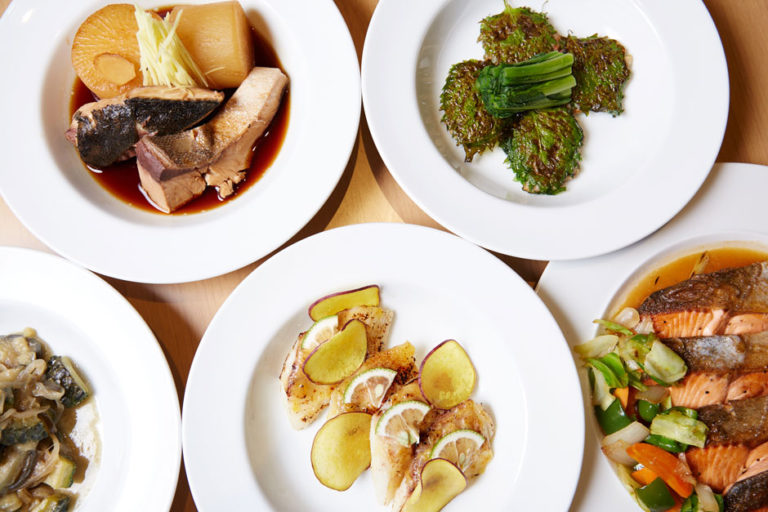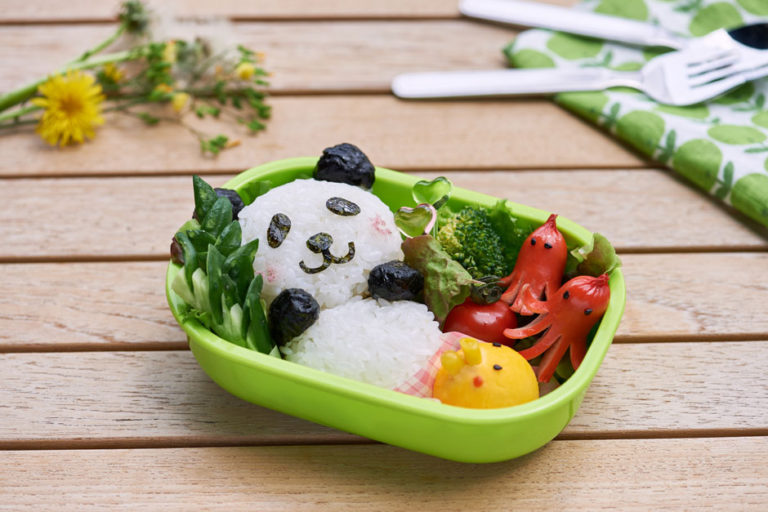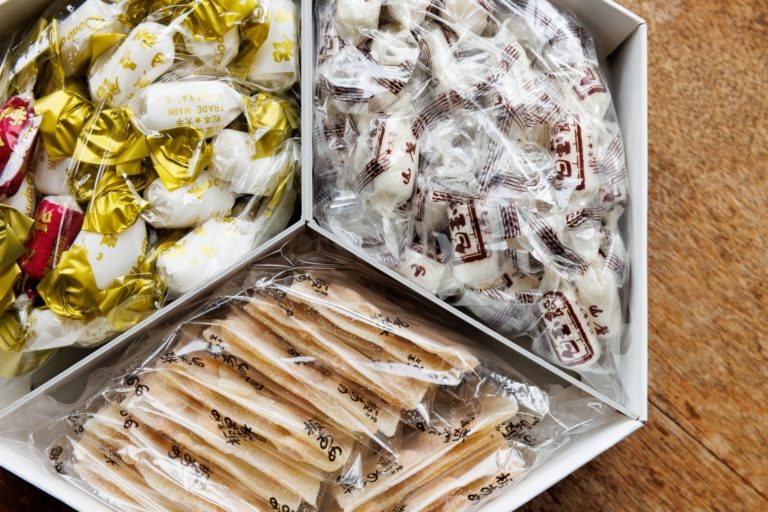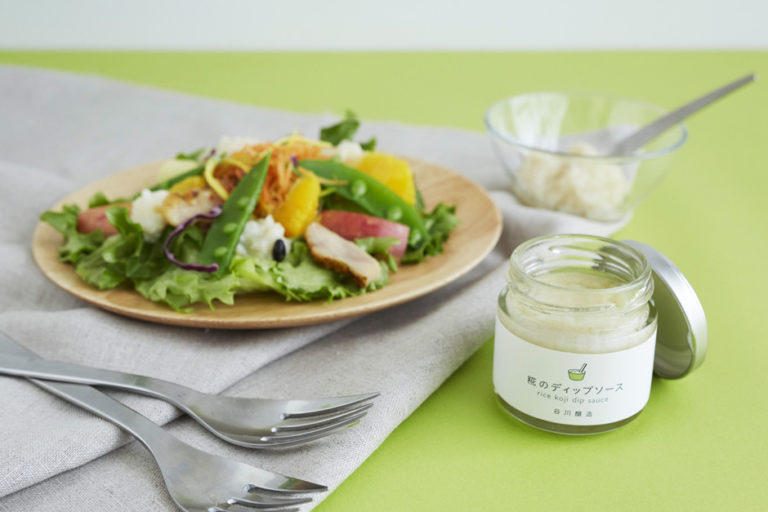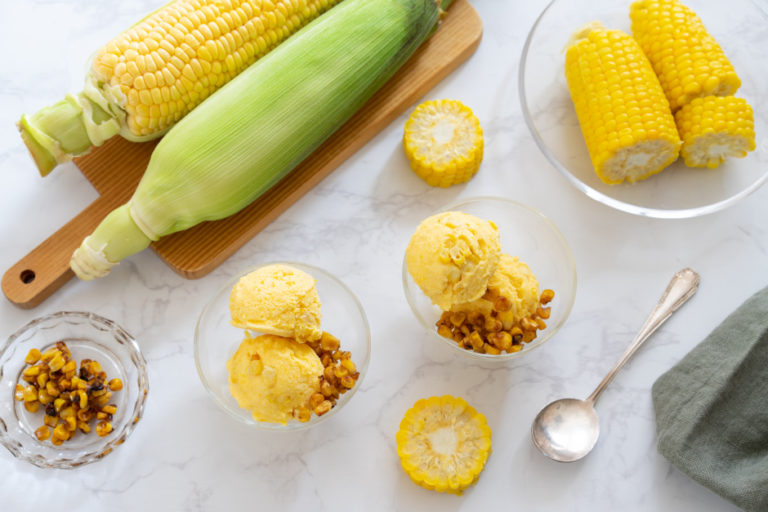A Traditional Summer Treat from Tomisato with a Century-Long History in Watermelon Farming
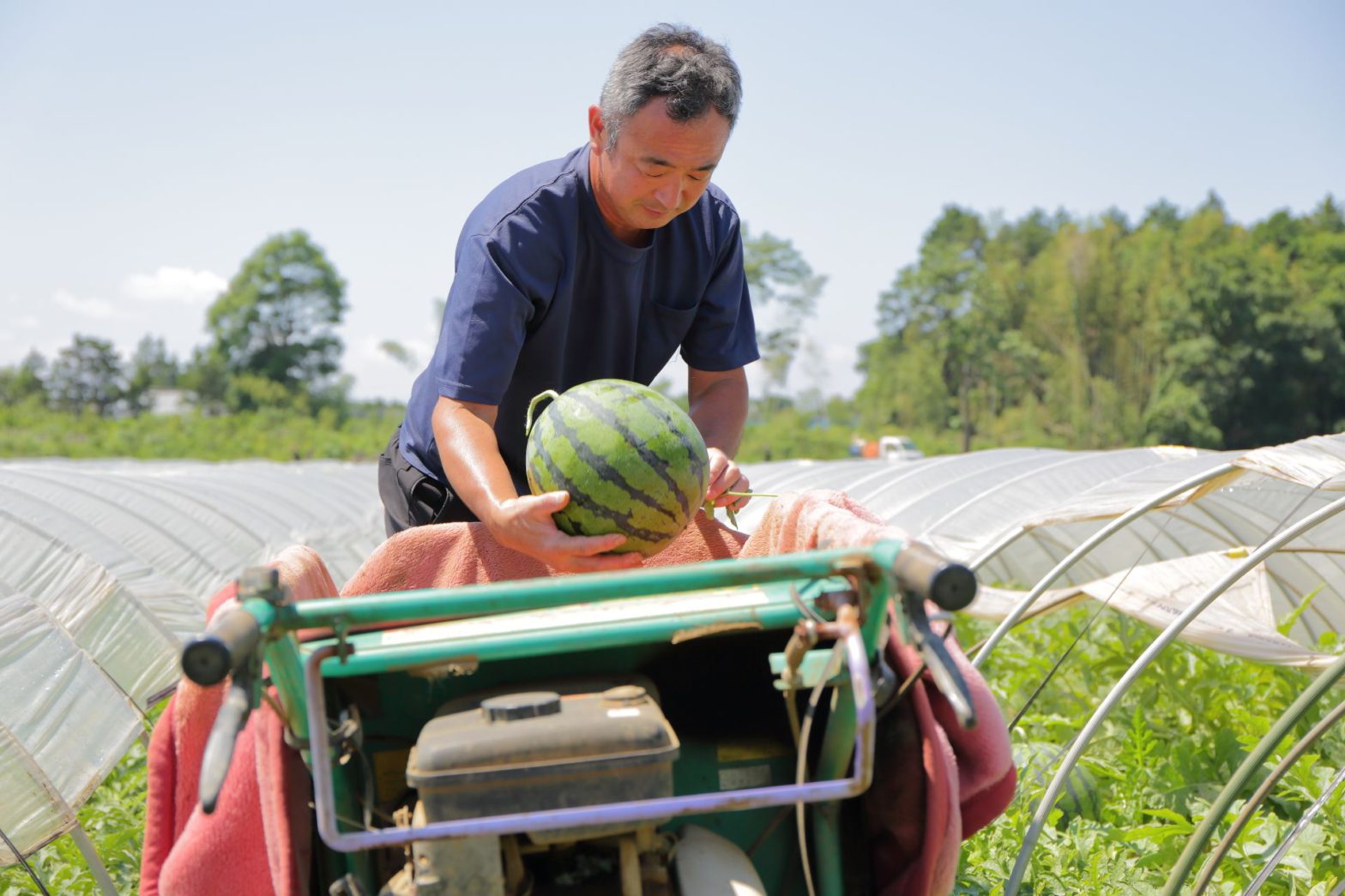
A Century of Watermelon Cultivation in Tomisato
While watermelon in Japan is an essential summer treat, how it was introduced to the country remains unclear. It is said to have been brought from Portugal around the 16th century, but some theories say that it may actually have come through China. Following the introduction of superior varieties from Europe and the US in the 19th century, watermelon cultivation became widespread in Japan, particularly in Nara Prefecture. Currently, they are mainly produced in the prefectures of Kumamoto, Chiba, and Yamagata.
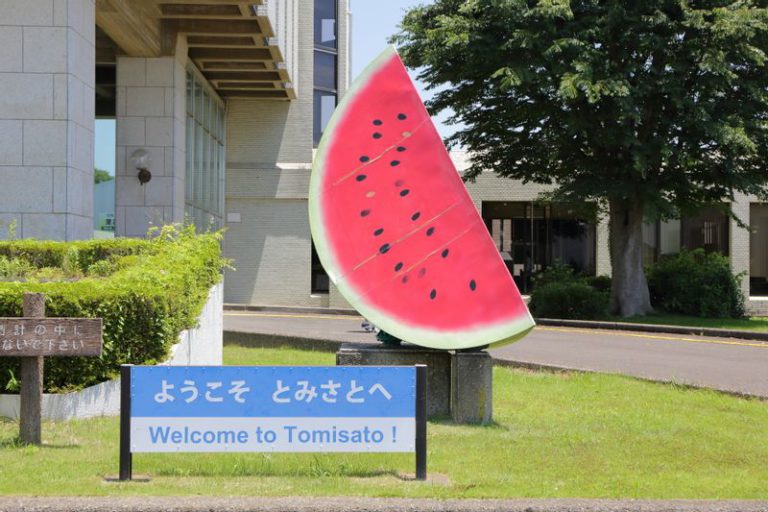
Some production areas actively use watermelons for promotion to help boost their local economy. Tomisato in Chiba Prefecture is one of such places. You can spot signboards and posters with watermelons all around the city, and there is even a giant watermelon monument sitting by the entrance to their city hall. Additionally, Tomisato holds a Watermelon Festival and a Watermelon Road Race annually, both gathering many visitors from inside and outside Chiba prefecture.
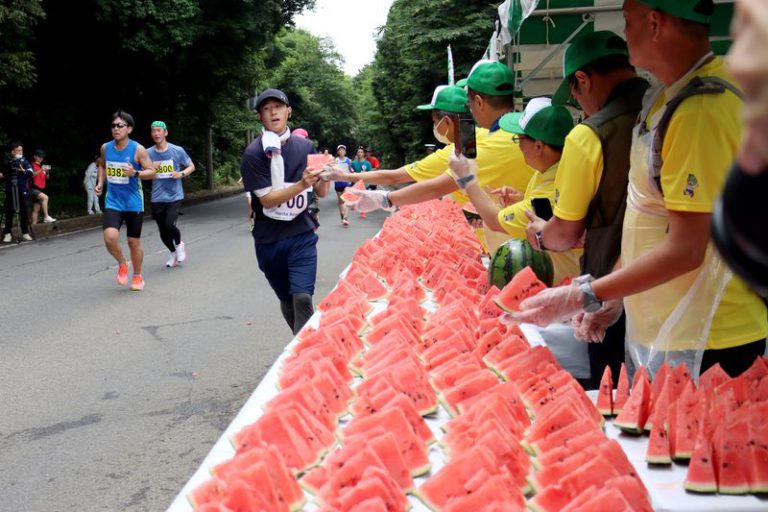
Watermelons have been grown in Tomisato since 1933. The Tomisato Village Watermelon Cultivation Association was established soon after, in 1935. The following year, watermelons were presented to the imperial family. Within barely two years since the start of full-scale cultivation, the Tomisato watermelon became nationally recognized. This sudden burst onto the scene attests to the excellent quality of this fruit.
Still, what makes watermelons grown in Tomisato so delicious? The answer has to do with the inland location of the city. The significant temperature difference between day and night contributes to the higher sugar content, resulting in very sweet watermelons. On top of that, the volcanic ash soil, which is good at draining water, makes it easier to grow watermelons, as the fruit is susceptible to humidity.
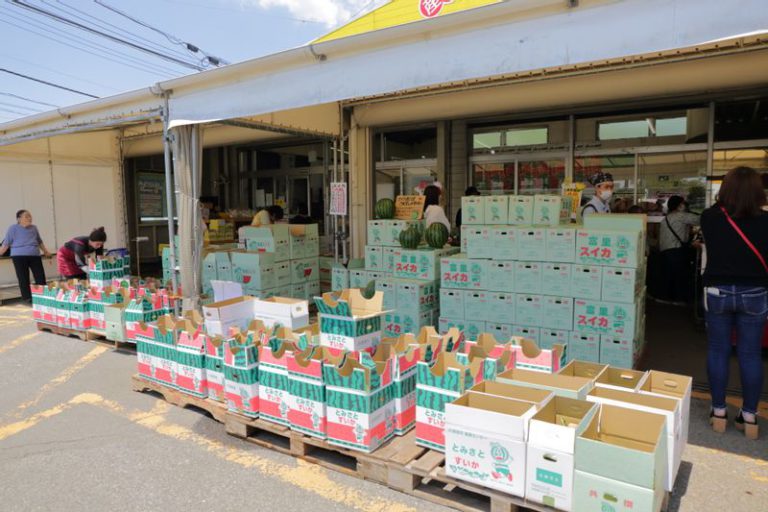
The Tomisato Village Watermelon Cultivation Association utilized the favorable farming environment to improve the watermelon quality. The members unified the cultivation method, conducted joint inspection and shipping, and worked on refining the flavor of the fruit. The establishment of continuous cropping technique at some point between the late 1950s and early 1960s led to a big jump in production. The association also put efforts into building the brand, distributing all watermelons produced under it as the Tomisato Watermelons nationwide.
Farmers in Tomisato grow a wide range of watermelon varieties. A local farmers’ market called “Shunsaikan” sells watermelons in different sizes, large and small. Some of the most prominent varieties include richly sweet Matsuribayashi, Kodai with well-balanced sweetness and aroma, and Aji Kirara that boasts a uniquely rich flavor. In fact, behind the simple word “watermelon” lies a complex world of diverse varieties.
Large Watermelons Grown Inside Tunnels
Hirokazu Suzuki runs a watermelon farm in Tomisato. We paid him a visit in early June, right in the middle of the shipping season. Mr. Suzuki is a third-generation farmer who has already been growing watermelons for over 30 years. He is a member of the Tomisato Village Watermelon Cultivation Association and serves as the Deputy Director of the Watermelon Division of JA Tomisato.
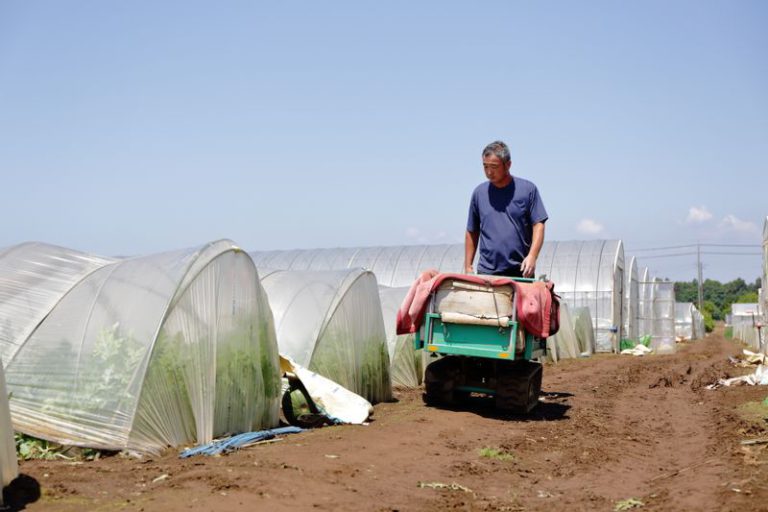
Like many other association members, Mr. Suzuki grows watermelons inside greenhouses and tunnels. Tunnel cultivation is a method of cultivation where watermelons are grown inside structures made of arches and covered with plastic sheets. These tunnels protect watermelons from the cold, rain, and other weather conditions.
Since the watermelons harvested in May require temperature control, they are grown in greenhouses. In June, the production moves to tunnels.
However, the work involved in growing watermelons isn’t limited to the summer season. Seeds are sown in winter, and seedlings are raised in spring. Including the preparation phase, the cultivation process demands a period of nearly six months.
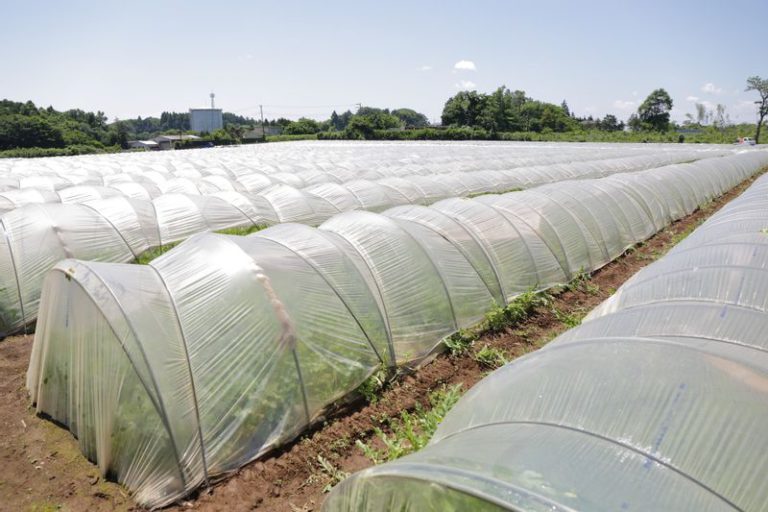
Although the shipping season of the Haru no Danran variety had only wrapped up at the end of May, on the day of our visit, Mr. Suzuki was already hard at work harvesting the Matsuribayashi watermelons. The farm field tightly lined with tunnels stretched before my eyes. It was surprising to hear that one such tunnel is home to over a hundred watermelons.
Mr. Suzuki parted the vines inside one tunnel, revealing a familiar striped pattern. After he brushed the vines further aside, watermelons the size of basketballs came into our view. They had a majestic feel to them, which made me involuntarily gasp with awe. When asked, Mr. Suzuki told us that one such watermelon weighs roughly eight kilograms.
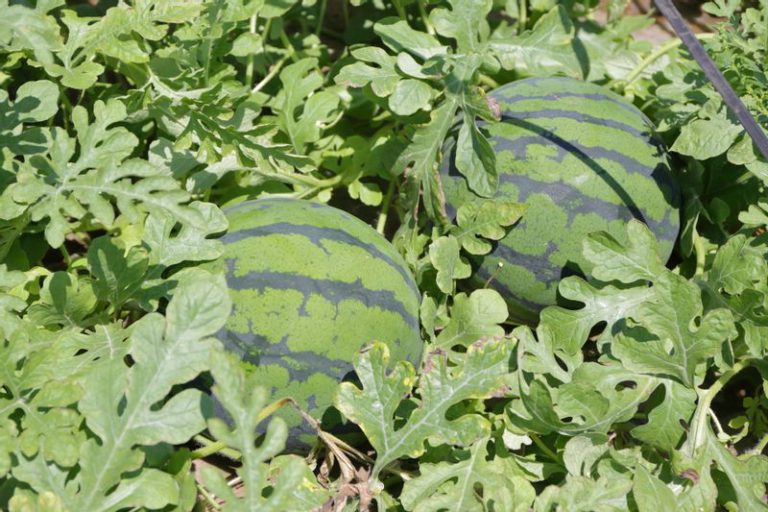
“In Japan, watermelons are divided into nine size categories, ranging from 5L to 2S. Today’s watermelons seem to be around 3L in size. The 4L-sized ones can weigh even over ten kilograms.”
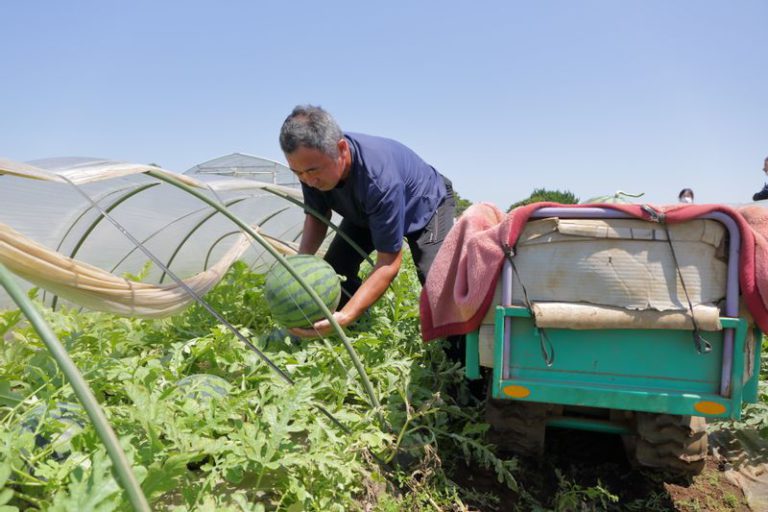
Mr. Suzuki lightly taps watermelons to check the density of the flesh inside them. A deep hollow sound suggests that the fruit flesh is evenly developed. When he finds one that is ripe, he gently places it inside a harvest cart after cutting off its stem. It looks like quite an exhausting work. Mr. Suzuki keeps standing and crouching while handling watermelons. Large beads of sweat form on his forehead in no time.
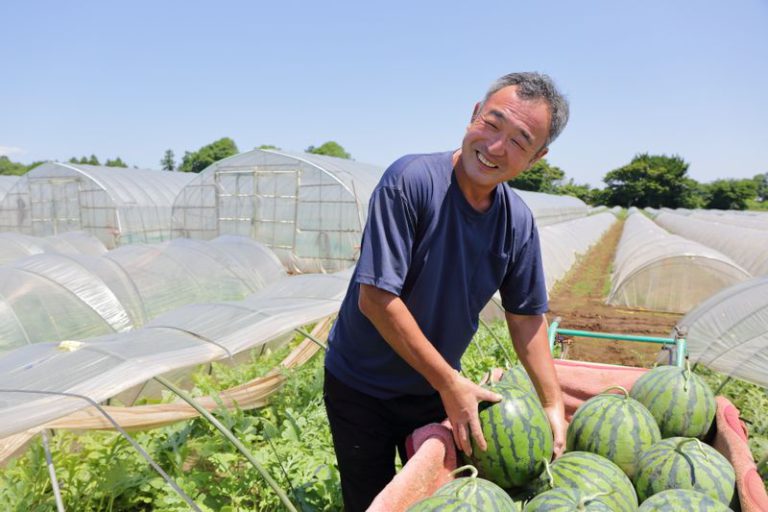
“Harvest has to be done by hand. Any scratches on watermelons will lower their grade, so they must be handled with care. In the height of summer, you get exhausted pretty quickly.” That said, the pollination step, which happens before the fruit is produced, is even more nerve-racking than harvesting. In this process, female flowers are pollinated with pollen from male flowers. If it fails, watermelons will not grow, so crop yields depend heavily on that step.
“I rely on natural pollination by bees, leaving this step up to nature to some degree. The problem is that bees activity is becoming less reliable because of the climate changes in recent years. Every year, I observe the process, praying that it all goes well.”
Juicy Enough to Make You Forget About the Summer Heat
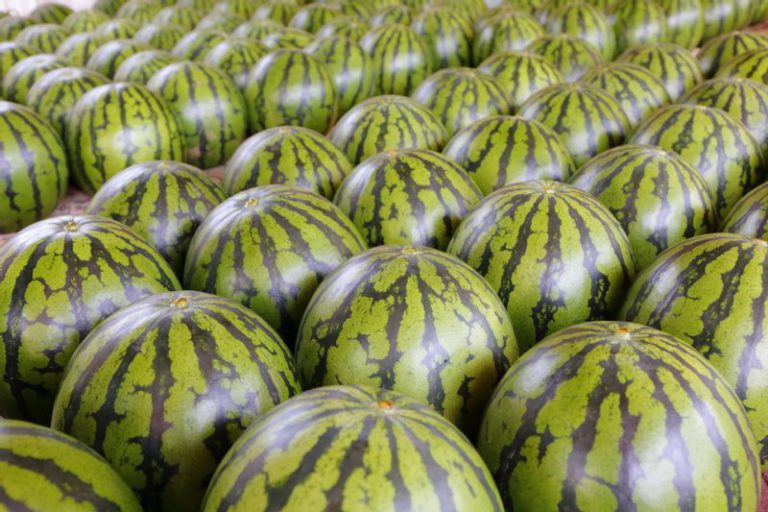
Leaving the farm field behind, we go back to the work area, where we are met with rows of freshly harvested Matsuribayashi watermelons. Each polished to a shine, they sit silently on the floor, looking somewhat proud. Mr. Suzuki picks one up and, using a knife with a broad blade, cleanly cuts it in two with one swift stroke. He cracks it open, revealing the vibrant red flesh of the watermelon.
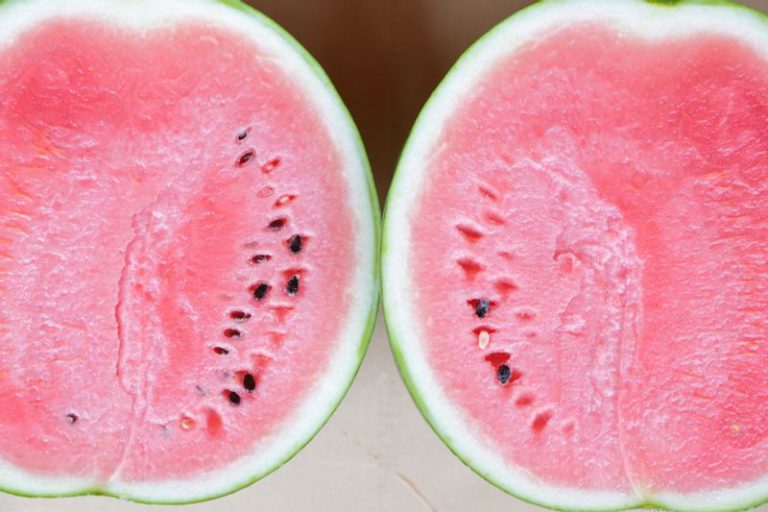
When I take a bite of my slice, it bursts with juice that instantly quenches my thirst. It has no peculiar aftertaste that is common to other gourds, and its sweetness is refreshing. It tastes so good that I contemplate eating the flesh as close to the rind as I can, but Mr. Suzuki stops me, jokingly saying that “Even the local folk don’t do that.”
As a side note, the common tips for picking a good watermelon say to pick the ones with “a well-developed stripe pattern” and “a slightly sunken stem,” but I wonder if it’s actually true.

“These tips aren’t bad, but choosing a good watermelon may be a bit difficult for people who aren’t too familiar with watermelons. If you’re looking for a perfectly ripe watermelon, I recommend the ones sold at farmers’ markets because the watermelons that end up at supermarkets and fruit and vegetable shops are often shipped before they could fully ripen due to distribution-related reasons. I encourage everyone to try watermelons in the areas where they are grown at least once in their life.”
Nearly a century has passed since people began growing watermelons in Tomisato. I thought that, as a farmer, Mr. Suzuki may be deeply attached to the fruit of his labor, but he gives me a surprising answer. “Yeah, well, I don’t really think about it so deeply (laughs). As long as I can grow delicious watermelons, that’s all that matters.” Summer traditions live on thanks to the simple passion of craftspeople like him.
Watermelons from Tomisato in Chiba Prefecture
Source:Watermelon farmer Hirokazu SuzukiPeak Season
From May through July (depends on the variety)
How to enjoy them
Eating a perfectly ripe watermelon sold at a farmers’ market as is

